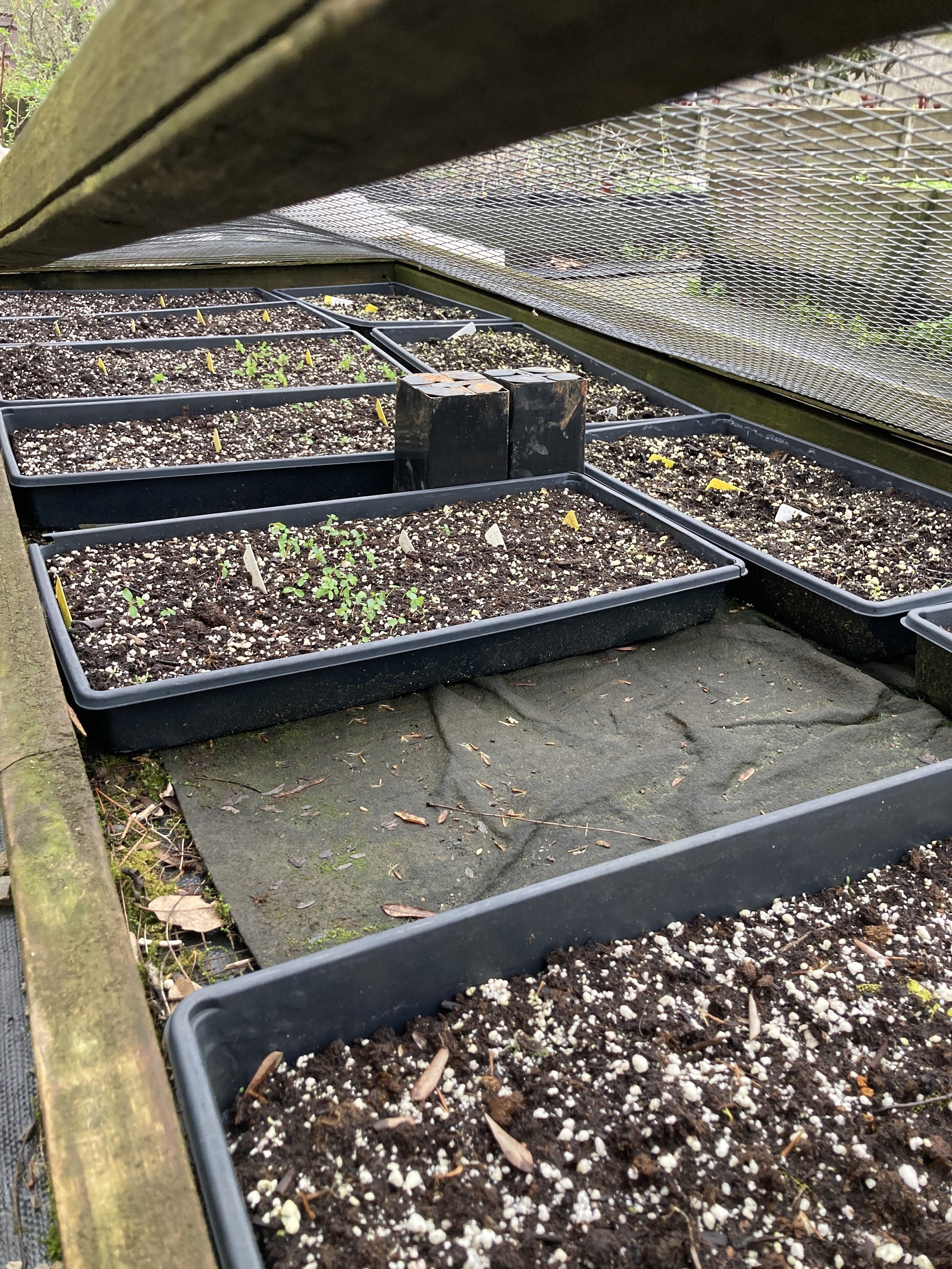Separating a clump of gooseberry seedlings for transfer to plug trays. A spoon makes a handy tool for digging into media.
Today and for several more days, I’m transferring seedlings from 1020 flats to plug trays (https://www.bootstrapfarmer.com/ 128-Cell Plug Trays for Seedlings). Flats overwinter outdoors in a “seed cage” on the north side of the house. The seedlings are from crosses made last summer.
The '“cage” for overwintering seed…
…is a frame of 2x4s covered with ½” hardware cloth above and below to keep out mice and birds.
Some crosses germinate early—in mid-to-late January—and I will bring these flats indoors rather than risk losing seedlings to the weather. The freeze-thaw cycles of late winter will pop seedlings out of the media they’re growing in.
This year when seedlings first began to emerge (late January), I moved all flats into the walk-in cooler we use for storing flowers. Individual flats were brought out as more seed in them began to germinate.
This method worked well for some crosses, but others did not germinate at all. I can never tell what crosses will do. However, keeping track of the number of berries from each cross gives me an idea of how many seedlings to expect. When seed doesn’t germinate well, I’ll carry the flat over another winter hoping for more seedlings the following spring.
In my experience, gooseberry seeds prefer spending the winter outdoors—even if only for part of it—to the relative comfort of a walk-in cooler set at 35±5⁰F. We are in USDA hardiness zone 6b.
A thousand gooseberry seedlings—the “early risers”—from hand-pollinated crosses made in spring 2022. And more to come!




